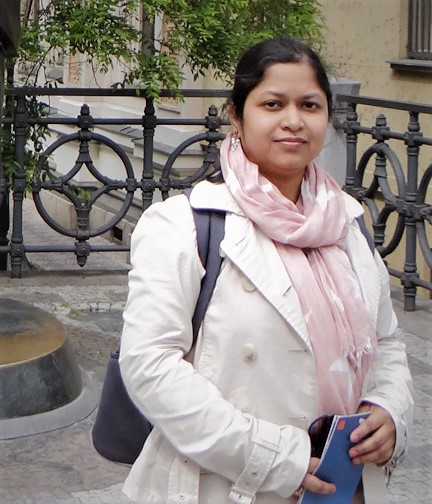Spectroscopy for Analysis of Natural and Synthetic Compounds
Course Attendees
Still no participant
Course Reviews
Still no reviews
Course Name : Spectroscopy for Analysis of Natural and Synthetic Compounds
Code(Credit) : CUTM3128(0-3-1)
Course Objectives
- To enable the students to analyze and characterize various small to complex organic molecules either obtained from natural sources or synthesized in laboratory
Learning Outcomes
- Students will learn the basic concepts of different spectroscopic methods and their significance in structural analysis.
- They will be able to determine structures of organic molecules by applying these spectroscopic methods.
- Students will obtain hands-on-training in sample preparation, scanning process and analyzing the spectra.
Course Syllabus
Module I:
Unit 1: UV-vis spectroscopy: Introduction, Principle, Instrumentation
Unit 2: Analysis of spectra
Module II:
Unit 1: IR spectroscopy: Introduction, Principle, Instrumentation
Unit 2: Analysis of spectra
Module III:
Unit 1: NMR spectroscopy: Introduction, Principle, Instrumentation,
Unit 2: Proton/ 1H- NMR, 13C-NMR, Analysis of spectra
Unit 3: 2D NMR (NOESY, COSY, HMBC, HMQC, HSQC), Analysis of spectra
Module IV:
Unit 1: Mass spectrometry: Introduction, Principle, Instrumentation
Unit 2: Analysis of spectra
Essential Reading:
- D. C. Pavia, G. M. Lampman, G. S. Kriz, Introduction to Spectroscopy, 3rd Edition, THOMSON, 2007.
- J. Mohan, Organic Spectroscopy, Narosa Publishing House, 2004
Supplementary Reading:
- B. H. Williams, I. Flemming, Spectroscopy Methods in Organic Chemistry, McGraw Hill, 2005.
- R. M. Silverstein, F. X. Webster, D. J. Kiemle, D. L. Bryce, Spectrometric Identification of Organic Compounds, Eighth Edition, John Wilry & Sons, 2017.
Session Plan
Session 1
UV-vis spectroscopy: Introduction, Principle, Instrumentation
Session 2
(Practice):
Analysis of UV-vis spectra.
Session 3
(Practice):
Sample preparation and recording of UV-vis spectra of simple organic compounds
Session 4
IR spectroscopy: Introduction, Principle, Instrumentation
Session 5
(Practice):
Analysis of IR spectra
Session 6
(Practice):
Sample preparation and recording of IR spectra of simple organic compounds
Session 7
NMR spectroscopy: Introduction, Principle, Instrumentation
Session 8
Proton/1H NMR, Chemical shift, Spin-Spin Coupling, Coupling Constant
Session 9
(Practice):
Analyze the structure and predict possible 1H NMR spectra
Session 10
(Practice):
Analyze 1H NMR spectra and predict the structures of unknown compounds
Session 11
13C NMR, principles
Session 12
(Practice):
Analyze the structure and predict possible 13C NMR spectra
Session 13
(Practice):
Analyze 13C NMR and 1H NMR spectra and predict the structures of unknown compounds
Session 14
Principles of different 2D NMR (NOESY, COSY, HMBC, HMQC, HSQC)
Session 15
Principles of different 2D NMR (NOESY, COSY, HMBC, HMQC, HSQC)
Session 16
(Practice):
Analyze the structure and predict possible 2D interactions (NOESY)
Session 17
(Practice):
Analyze the structure and predict possible 2D interactions (COSY)
Session 18
(Practice):
Analyze the structure and predict possible 2D interactions (HMBC)
Session 19
(Practice):
Analyze the structure and predict possible 2D interactions (HMQC)
Session 20
(Practice):
Analyze the structure and predict possible 2D interactions (HSQC)
Session 21
(Practice):
Principles of Mass spectroscopy
Session 22
(Practice):
Analyse the structure and predict possible peaks in mass spectroscopy
Session 23
(Practice):
Analyse the mass spectrum and predict possible fragmentations
Project:
Extract and purify different phytochemicals from plant raw materials and analyse their structure using spectroscopic methods.
Case Studies
Our Main Teachers

Assistant Professor Centurion University of Technology and Management Odisha, India Teaching Organic Chemistry Synthetic methods Stereochemistry Natural products Research areas/interests Synthetic methodology Natural product synthesis Organocatalysis About Me Ph.D in Synthetic organic chemistry from National Chemical Laboratory, Pune Research area: Carbohydrate chemistry, Transition metal catalysis, Methodology and total synthesis. Post-doctoral research: Central […]


Recent Comments